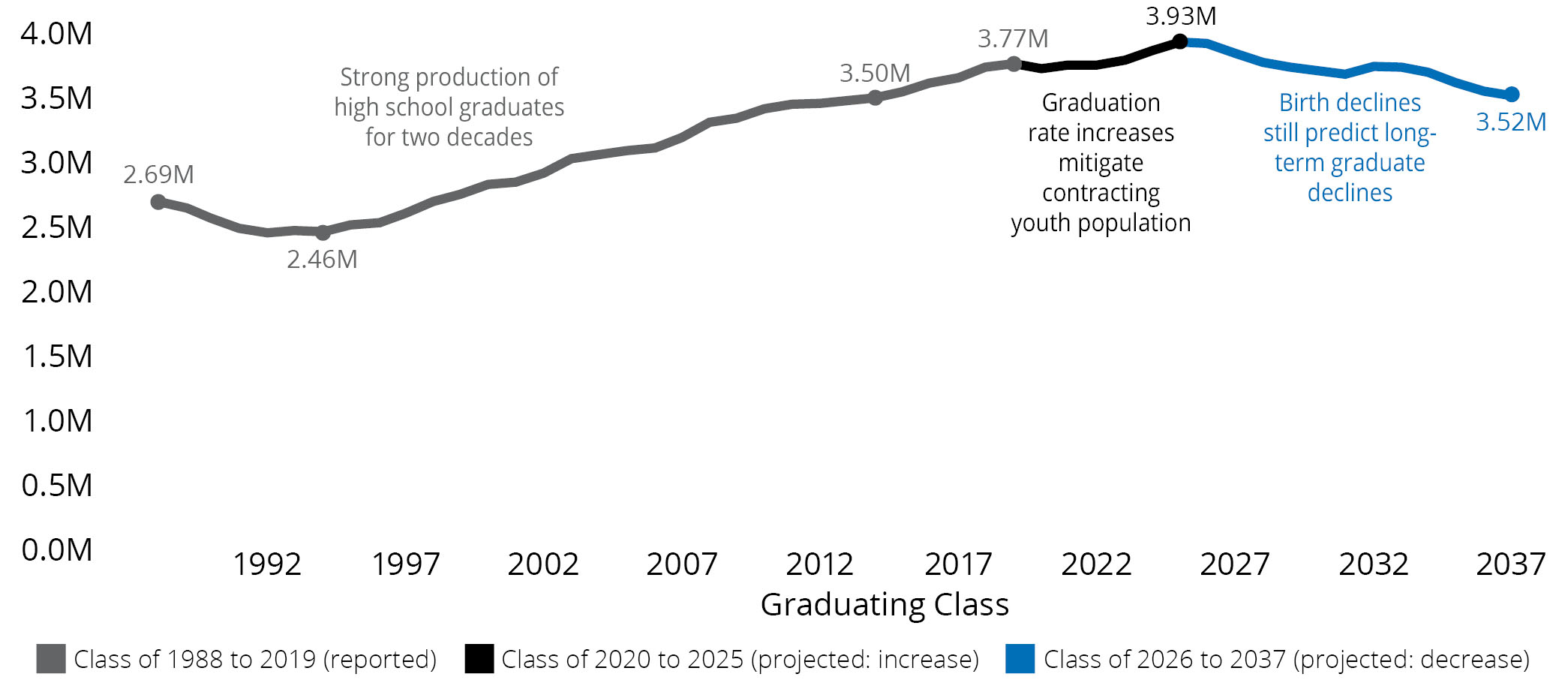New Avenues
There may have been a birthrate decline nearly 18 years ago, but that does not erase the existing population of adults without a college education.
“Despite the fact that we know there’s a declining number of 18-year-olds, I expect that the state’s total student population is going to grow significantly over the next five years, and a lot of that will be more re-skilling and upskilling and to help more adults get college degrees,” said Kornbluh.
Unfortunately, many adults feel that soul-crushing student debt is no longer worth the payout. After all, 57% of Americans think college costs aren’t worth it, and 75% think it’s too expensive for the average person to afford. As of September 2022, 2% of college graduates were unemployed, and 33% were underemployed, meaning their jobs do not require college degrees. Despite these discouraging post-grad statistics, higher ed professionals still advise those questioning the validity of a college degree to consider applying.
“The data is clear that students who pursue and persist and complete a college degree have better outcomes regarding their long-term earnings, for example,” said Boeninger. “And in many cases, their general satisfaction is higher than in some other populations.”
Although 33% underemployment seems grim, the majority of graduates are employed and make approximately $22,000 more than those with only a high school diploma or equivalent.
As time progresses, institutions must change to meet the needs of students from various backgrounds. With the evolution of college campuses after COVID-19 and the demographic cliff, Kornbluh proposed a solution for adult learners.
“We’re making changes to our curriculum in which we will give working adults credit for prior experience,’ said Kornbluh. “If you’ve worked in a field and gained certain knowledge, you may not have to take introductory classes, so there are ways to make college work for people.”
Traditionally, college undergraduate programs have been marketed to fresh high school graduates. Changing the curriculum is one way that colleges are evolving to accommodate this new student pipeline.
“They’ve been out in the workforce before they start college,” said Kornbluh. “We help them get the advanced knowledge and recognize that they’ve already gained some knowledge through their working experience.”










